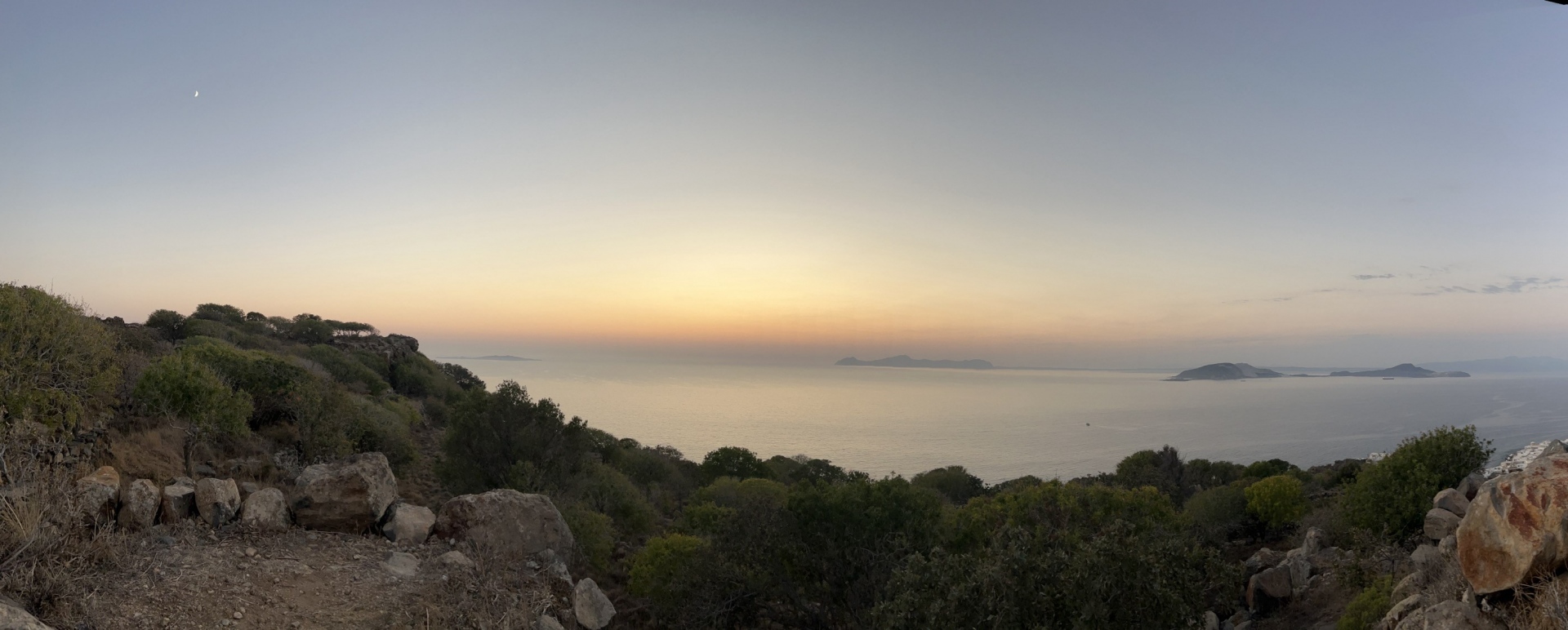As a landscape designer, but also as someone who loves traveling, I always seek unique places to visit. One of the main things that shaped my passion for landscapes in the first place was how powerful they can be.
This past summer I was lucky enough to visit an extraordinary place, the island of Nisyros in Greece, a great example of a natural landscape taking over and shaping the local life and architecture. It was captivating to see how the specific, unique characteristics of a lunar landscape were emerging in different ways everywhere on the island! The landscape’s presence is so dominant that it creates a very unique experience for visitors.
VOLCANIC ARCHITECTURE
The entire island is a volcano formed by hydrothermal activity hundreds of years ago, with one of the largest craters in the world and has been constantly active since its formation. The area surrounding the craters that hosts several villages was composed by volcanic lava, something that strongly influenced the architecture. One can see the rich variety of volcanic rocks embedded in the architecture of the island. Not only are homes constructed from volcanic rocks and insulated with pumice stone, but there are also built-in interior elements made from volcanic/earth material, like traditional hand-mills and cisterns.
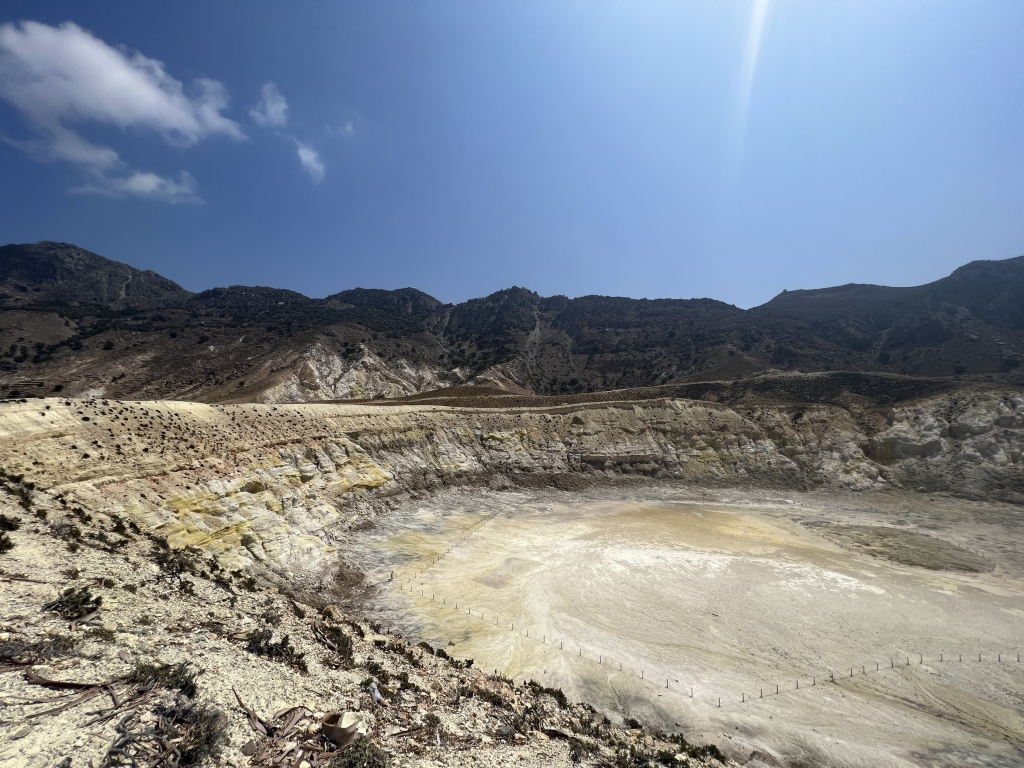
The larger crater of the volcano in Nisyros, called Stefanos.
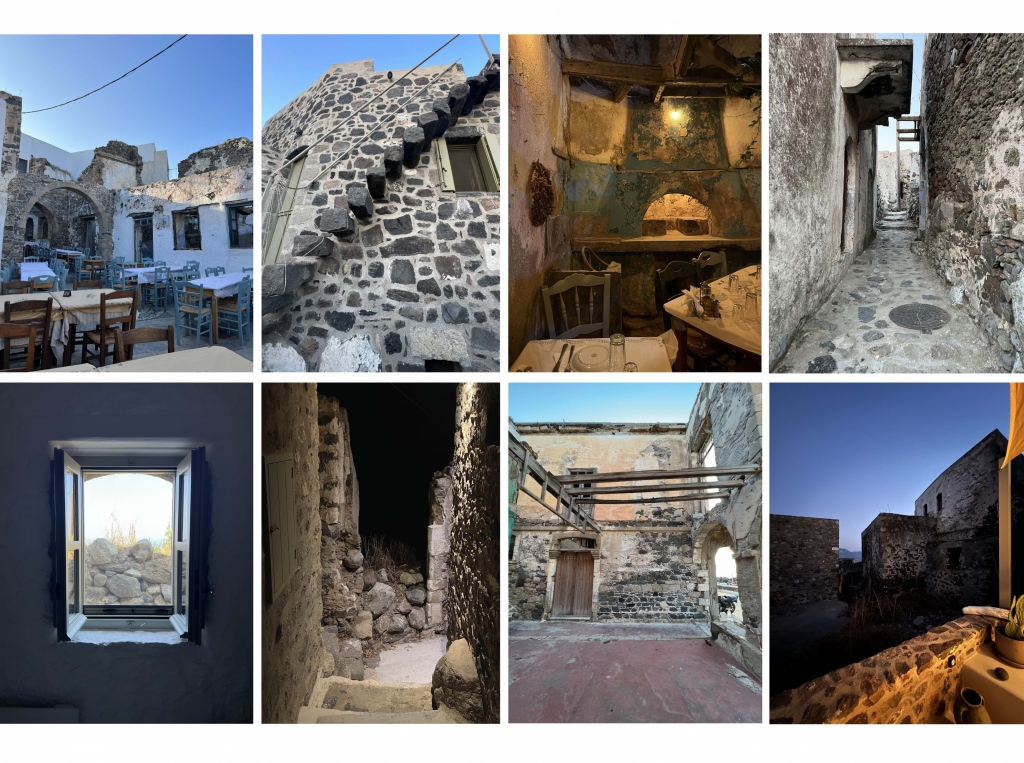
NATURAL LANDSCAPE
One of the island’s natural gems is the thermal springs created by the island’s intense volcanic activity. The springs are rich in minerals, making healing baths one of the main local activities. Another interesting experience formed by the volcanic landscape is the phenomenon of a natural sauna at Emporeios Village. And while one would expect to see typical crystal blue waters and golden sand, the beaches of Nisyros consist of black pebbles formed by lava.
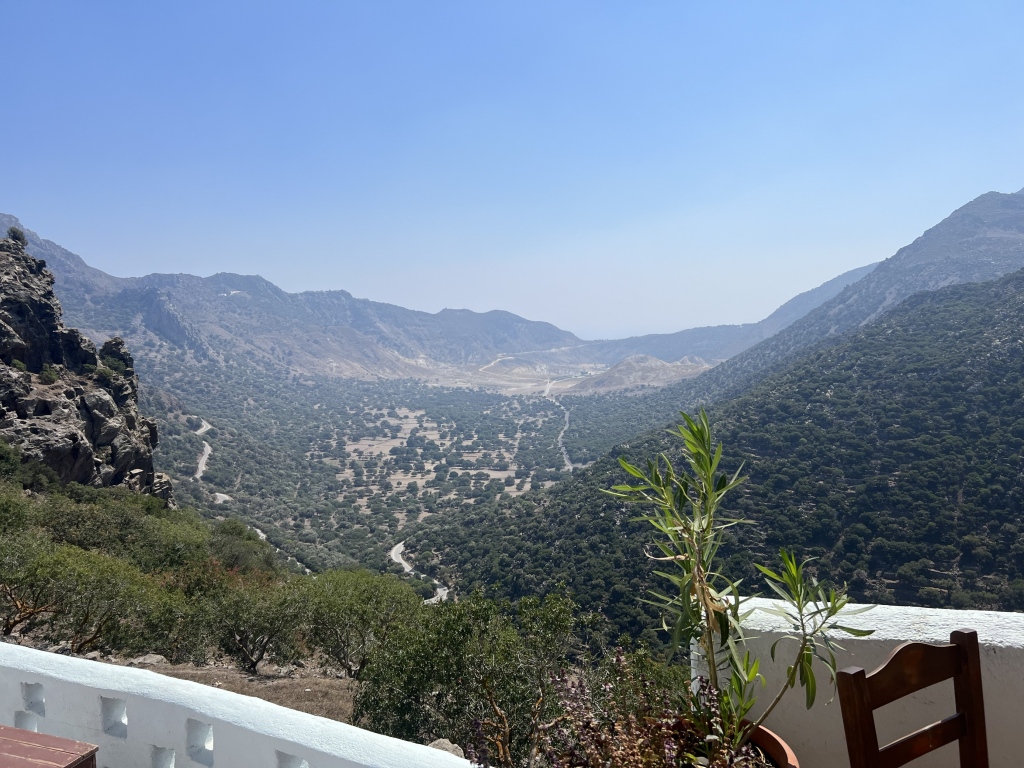
View of the volcano from Emporios village.
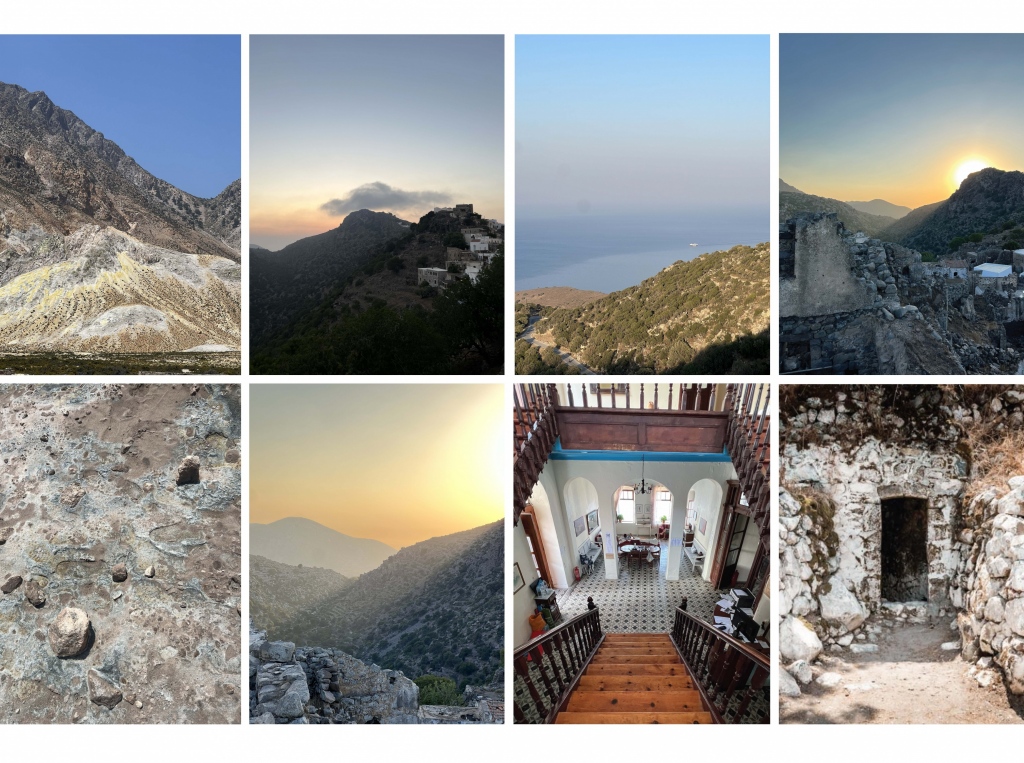
BUILT STRUCTURES
The power of the volcanic landscape also appears in one the most significant structures on the island; Paleokastro – the ancient acropolis of Mandraki village. It is built from basaltic andesite, one of the hardest volcanic rocks in the world, which has helped preserve the acropolis over time. Another example of this dynamic relationship between the natural landscape and the architecture is the Monastry of Panagia Spiliani. Sitting at the top of a hill, where a large portion is inside a cave the boundaries of natural stone and artificial building structures really blur out.

View from the top of Emporios village.

These are just a few examples highlighting the powerful presence of the landscape. The island is truly a delightful experience and a great inspiration for our field.
